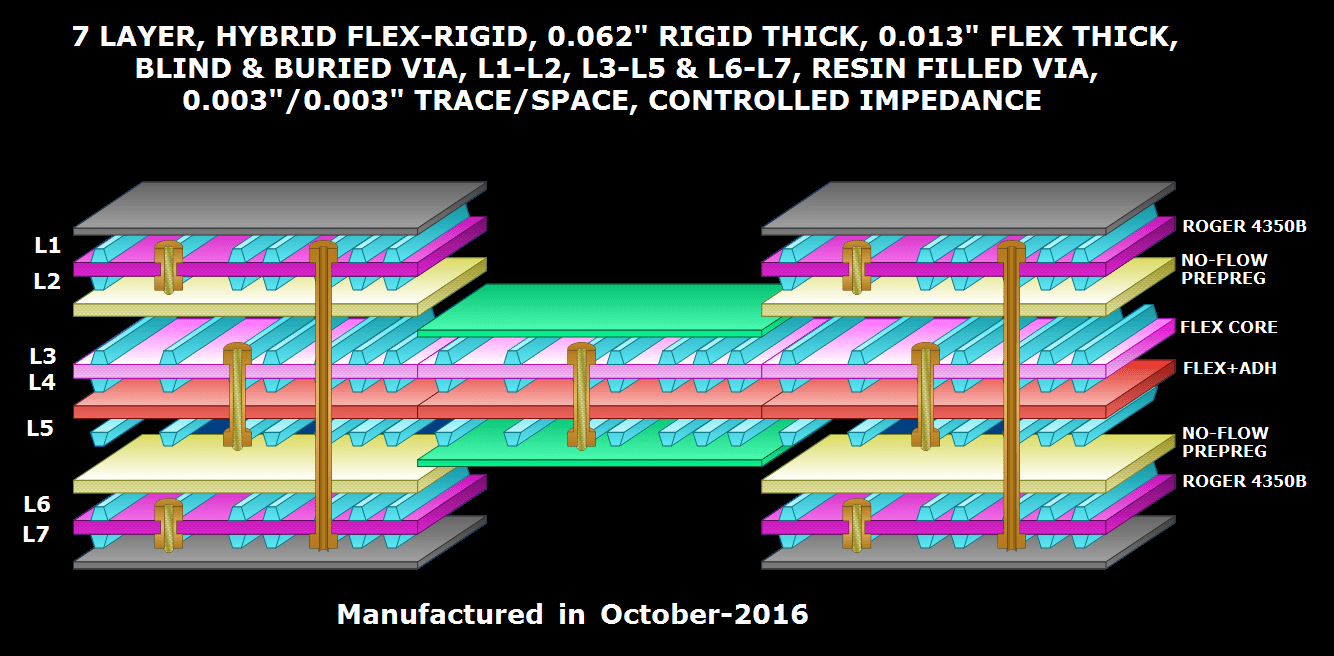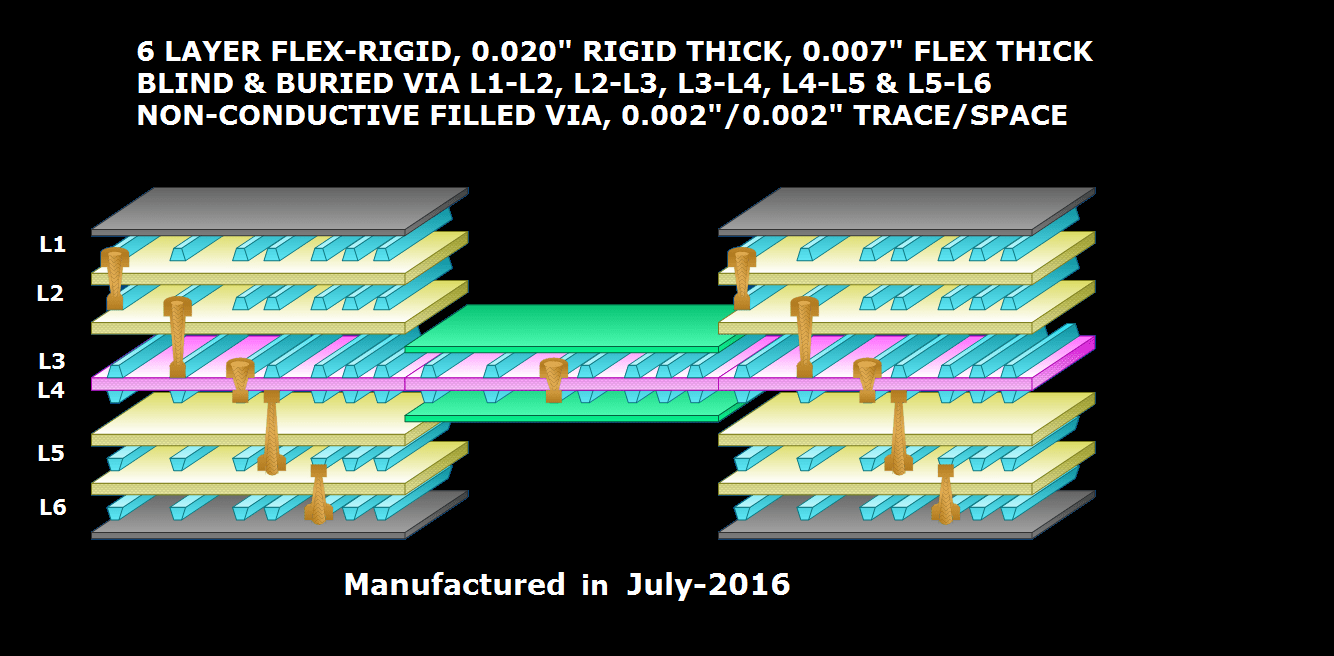Types of Flex PCBs We Offer
According to the IPC, a flexible printed circuit board is an arrangement of printed circuitry and components in a pattern utilizing flexible base materials with or without a flexible coverlay. Our products conform to the IPC definition, and we offer our customers FPCs that are made of flexible film.
We have been fabricating flex PCBs for the past two decades, and as demand from industries has grown, we are now making boards that have become increasingly more complex over the years. The most common types of flexible printed circuits we make today are:
Single-Sided Flex Circuits
This is the most common and simple flex PCB in the market. Made of a flexible dielectric film, these boards are printed only on one side with a single conductor layer. As the most affordable flex PCBs in the market, these boards are relatively easy to fabricate. Most calculators use this type of printed circuit because of their simplicity and low weight.
Double-Sided Flex Circuits
Just like single-sided flex circuits, double-sided flex circuits also consist of a single flexible dielectric film. However, instead of a printed conductor layer only on one side, the double-sided flex circuit has two printed conductor layers on both sides of the dielectric, offering double the circuit density and enhanced power handling capability. This increased capability makes them more popular, despite their increased cost of production as compared to the single-sided type.
Multi-Layered Flex Circuits
Flex circuits can also have three or more conductor layers, separated by additional dielectric layers. Because of the complex nature of their construction, they are more expensive to fabricate as compared to single- and double-sided flex circuits. Military and aerospace applications most often use multi-layered flex circuits.
Rigid-Flex Circuits
This is a special type of circuit, as it is a hybrid of standard flex circuits and a rigid PCB. A rigid-flex PCB arrangement incorporates several rigid circuit boards mounted with components, and flexible circuits linking them. Commercial electronic equipment and smart devices are the major users of these circuits. Also, because of their superior reliability, strength, flexibility, and consistent performance, the aviation and military sectors use them.












